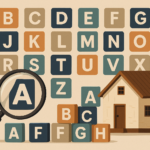Rentvesting has become an increasingly popular strategy for wealth creation, especially as a response to the challenges of home ownership in major Australian capital cities.
This approach involves renting where you desire to live while investing in property.
It has emerged as an alternative to traditional home ownership, particularly with the rising issue of housing affordability, which has been locking many potential homeowners out of their desired locations.
While it might seem unconventional, rentvesting can be a more attractive strategy for some.
From a cash flow perspective, it is often easier to rentvest because the combined holding costs of an investment property and rent are typically less than mortgage repayments.
More importantly, many rentvesters believe this strategy can build wealth at a faster rate than home ownership.
Let’s explore the pros and cons of rentvesting and home ownership.

Rentvesting: The Pros and Cons
Rentvesting: Pros
- Loan Interest & Property Expenses Tax Deductible: The interest on your investment loan and associated property expenses are tax-deductible.
- Rental Income: Rental income helps cover holding costs, easing your financial burden.
- Better Cashflow in the Short-Term: Due to rental income and tax deductions, rentvesting generally provides better short-term cash flow.
- Flexibility: Renting allows you to live where you choose, offering the freedom to move.
- Buy into Better Investment Locations: Rentvesting allows you to purchase properties in areas with better growth potential, even if they are outside your current location.
- Ability to Sell & Realise Equity: You can sell the property when you choose and cash out your equity.
Rentvesting: Cons
- Rent Paid with After-Tax Money: Unlike mortgage repayments, rent is paid with after-tax income, which can be a higher burden.
- Land Tax on Investment Properties: Investment properties may incur land tax, depending on the value of the land and the state in which it is located.
- Capital Gains Tax (CGT): CGT applies when selling investment properties, potentially reducing your profits.
- Renting Indefinitely: While mortgage repayments eventually end, renting is a perpetual expense.
- Potential to be Evicted: You may be asked to leave by your landlord at any time, although rules regarding evictions have been tightened in tenants’ favour
- Limitations on Personalisation: Renting means you can’t make significant modifications to the property for personal preference.
- Higher Interest Rates on Investment Loans: Investment loans tend to have slightly higher interest rates than residential loans.
- Potential to be Locked Out of the Market Indefinitely: If your investments do not generate the same dollar value growth as a potential home, you may find yourself in a situation where you can never own a home in the location where you want to live unless you sell all your investments and pay a lot of CGT.
Home Ownership: The Pros and Cons
Home Ownership: Pros
- Main Residence CGT Exemption: Your primary residence is exempt from Capital Gains Tax – there are very few things in life that are tax-free.
- Living Mortgage-Free in Retirement: Once the mortgage is paid off, you can live rent-free, which can be beneficial during retirement.
- Stability and Security: You can’t be evicted by a landlord, offering more stability.
- Flexibility in Personalisation: As the homeowner, you can make changes to the property to suit your personal preferences.
- Living the ‘Great Australian Dream’: Home ownership is a hallmark of financial security and a widely aspired goal in Australia.
- Lower Interest Rates: Mortgage rates on owner-occupied homes are typically lower than on investment properties.
Home Ownership: Cons
- Non-Deductible Loan Interest and Expenses: Unlike an investment property, the interest on your home loan is not tax-deductible.
- Less Flexibility in Location: Homeownership may limit your ability to move, especially if you are tied to a long-term mortgage.
- Underestimate Holding Costs: Homeowners often underestimate how much it costs to own their home. Not only do expenses like Council rates and insurance tend to rise annually, but the regular trips to Bunnings for maintenance and improvements tend to add up.
A Comparative Case Study
To better understand the impact of these two strategies, let’s look at an example of a 30-year-old individual with the following financial situation:
- Income: $200,000 per year
- Living Expenses: $80,000 annually
- Cash Savings: $200,000
- Desired Property: $1,000,000
Home Ownership Scenario
In this case, the individual buys a home for $1,000,000.
They pay a 20% deposit, borrowing $800,000 from the bank and taking out a 30-year principal and interest mortgage.
Assuming an average interest rate of 5.75%, they make standard mortgage repayments.
Rentvesting Scenario
The rentvestor also pays a 20% deposit and borrows $800,000 from the bank but opts for an interest-only loan with an interest rate of 6.25%.
They rent out the property for $480 per week and pay rent for a similar property at the same rate.
Both rents increase by 4% annually.
In both scenarios, the property experiences an average capital growth of 7% per year, including inflation.
The individual invests any remaining surplus cash flow into the share market with a 7% annual return.
For simplicity, we’ve disregarded certain costs, such as stamp duty, insurance, and maintenance, but have included land tax and rental management fees in the rentvesting scenario.

Financial Results After 30 Years
At age 60, the net asset positions are as follows:
- Rentvester’s Net Asset Position: $5,557,088 (in today’s dollars)
- Homeowner’s Net Asset Position: $5,753,896 (in today’s dollars)
While the homeowner is slightly ahead by $196,808, the difference is relatively small.
Notably, the homeowner’s cash flow improves over time, even with ongoing mortgage repayments.
The rentvester’s cash flow, though stronger in the initial years, is slightly lower at the 30-year mark due to land tax, higher interest rates, and longer loan durations.
However, if we factor in the capital gains tax associated with the investment property, the rentvester’s after-tax net asset position is $4,816,288 (in today’s dollars), $937,608 less than the homeowner’s.
Looking Beyond: Retirement and Long-Term Wealth
When considering retirement, the differences become even more pronounced.
The homeowner’s mortgage is paid off, while the rentvester continue to pay rent and incur higher costs.
In the first year of retirement:
- Homeowner’s Cashflow: $78,138 stronger than the rentvester’s
- The rentvester has to sell down some share portfolio assets to fund their retirement.
By age 90, the net asset positions are:
- Homeowner’s Net Asset Position: $16,658,498 (in today’s dollars)
- Rentvester’s Net Asset Position: $14,665,944 (in today’s dollars)
The homeowner is $1,992,554 ahead after a lifetime of wealth-building, with the mortgage-free advantage becoming substantial.
If we factor in the capital gains tax associated with the investment property, the rentvester’s after-tax net asset position is $11,651,047 (in today’s dollars), $5,007,451 less than the homeowner.
When Rentvesting Makes Sense
While the calculations show that home ownership offers a stronger long-term position, there are cases where rentvesting could be the right choice. For example:
- Suboptimal Property Market: If the area where you live doesn’t offer strong capital growth, it might be worth investing in a different location with better growth prospects.
- Short-Term Living Plans: If you don’t plan to stay in a specific area long-term, rentvesting could allow you to invest in a property that aligns with your future goals.
- Interstate/Overseas Work: For individuals working in different locations, rentvesting provides the flexibility to secure a property in the area where you eventually want to settle.
Typically, we find the best thing to do is buy the “forever” home as soon as possible.
The reason for that is that you have to buy it with after-tax dollars, so delaying that for 10 years, for example, could cost you an extra ~$1M.
This is a lot of money on an after-tax basis and would require your income to be substantially higher to afford the same home.
Conclusion
While the comparison between rentvesting and home ownership shows that the latter tends to be more advantageous in the long run, rentvesting can be a highly effective wealth-building strategy depending on individual circumstances.
If you’re unsure about which path is best for you, it’s always wise to consult with a financial advisor who understands property and can help tailor a strategy that aligns with your goals.














